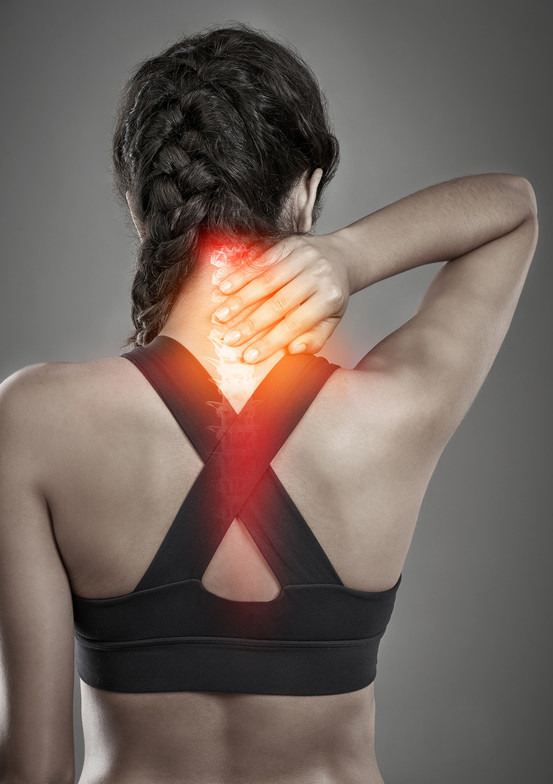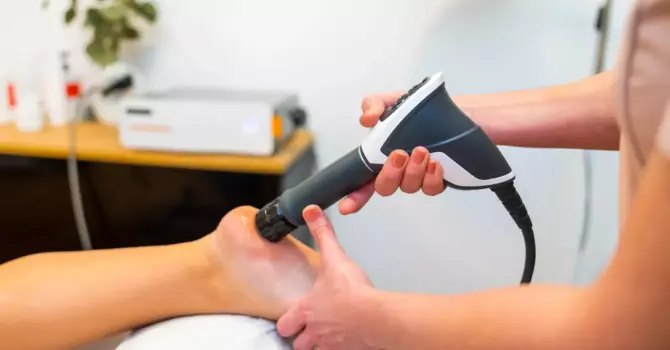
What Causes Chronic Neck Pain?
Chronic neck pain is a widespread issue affecting millions of people worldwide. Whether it's a dull ache, persistent tightness, or sharp pain during movement, chronic neck discomfort can interfere with everything—from your ability to work and exercise to how well you sleep.
In this article, we'll break down the most common causes of neck pain, explore the underlying mechanisms, and discuss how you can begin to understand and manage this condition.
Our goal at Arthrology Chiropractic is always to inform and empower.
What is Chronic Neck Pain?
Chronic neck pain is typically defined as pain in the cervical spine (your neck) that lasts longer than 3 months. It can range in intensity from mild to severe and may be localized or radiate into the head, shoulders, upper back, or arms.
Unlike acute neck pain, which often resolves with rest and conservative care, chronic neck pain tends to persist, evolve, and impact the quality of life over time.
Understanding the Cervical Spine
Your cervical spine consists of seven vertebrae (C1-C7), supporting your head, protecting your spinal cord, and enabling mobility. The structure includes:
- Intervertebral discs that cushion the vertebrae and assist in mobility.
- Facet joints that guide movement.
- Ligaments and muscles that provide stability and motion.
- Nerves that exit between each vertebra that control motor and sensory functions.
Any disruption in these components can contribute to chronic neck pain.
Top Causes of Chronic Neck Pain
1. Poor Posture and Forward Head Position
With the rise of smartphones, laptops, and sedentary work, forward head posture (FHP) has become a leading cause of neck pain. In this posture, the head shifts forward in relation to the shoulders, placing increased strain on the cervical spine.
Studies have shown that for every inch of forward head translation, the weight load on the neck and upper back structures doubles, leading to increased strain, fatigue, and, eventually, pain.
Common contributors:
- Working at a desk without proper ergonomic support.
- Looking down at phones or tablets for prolonged periods.
- Driving long distances with poor body alignment.
2. Muscle Imbalances and Overuse
Overuse or chronic tension in the upper trapezius, levator scapulae, and cervical erector spinae muscles can lead to myofascial trigger points and referred pain.
These tight muscles often develop due to:
- Stress (leading to guarding or clenching).
- Repetitive strain (e.g., typing, texting, lifting).
- Poor breathing mechanics (chest breathing instead of diaphragmatic).
Over time, the muscles become shortened, fibrotic, and weak, contributing to biomechanical dysfunction and discomfort.
3. Cervical Disc Degeneration (Degenerative Disc Disease)
As we age, the discs in our spine lose hydration and elasticity. This process (degenerative disc disease or spondylosis) can lead to disc thinning, joint stiffness, and increased mechanical stress on nearby tissues.
While disc degeneration is part of the normal aging process, it can become problematic when:
- Nerve roots become compressed as they exit the spine (cervical radiculopathy).
- Inflammation increases in the surrounding joints and tissues.
- Movement becomes restricted or painful.
4. Facet Joint Dysfunction
The facet joints in the cervical spine allow for smooth, controlled movements of the spine, such as bending, twisting, and extending. Dysfunction can occur when these joints become:
- Irritated or inflamed (facet joint syndrome)
- Restricted due to muscle guarding or injury
- Degenerated due to arthritis
Facet joint pain is often described as stiffness that can progress to sharp pain with specific movements.
5. Whiplash and Other Old Injuries
Past injuries - such as whiplash from a car accident or a sports-related injury - can set the stage for long-term pain. Even if symptoms weren't severe at the time, incomplete healing, persistent biomechanical dysfunction, or poor rehabilitation can cause issues later on.
Whiplash-associated disorders often involve:
- Soft tissue strain/ sprain (muscles, ligaments)
- Facet joint inflammation
- Altered proprioception (sense of joint position)
6. Thoracic Spine Dysfunction
Neck pain is often a symptom of dysfunction elsewhere, particularly in the thoracic spine (mid-back). Limited mobility in this area—frequently an adaptation from poor posture—can force the neck to compensate, leading to overuse and pain.
Improving thoracic spine mobility is a common approach in chiropractic care.
7. Tech Neck and Screen Time Overload
"Tech neck" is a modern phenomenon caused by prolonged screen use. The static forward head position, combined with eye strain and cognitive fatigue, creates a perfect storm for pain and dysfunction.
To combat tech neck:
- Take regular screen breaks
- Set your screen at eye level
- Strengthen your postural muscles with resistance training
8. Stress and Psychosocial Factors
Believe it or not, chronic stress is a major contributor to ongoing neck pain. Psychological stress causes increased muscle tension, altered breathing, and reduced pain tolerance.
Research from the Journal of Pain links chronic musculoskeletal pain with psychosocial factors like anxiety, depression, and sleep disruption. It's not just physical - it's the whole body and mind.
Signs Your Chronic Neck Pain Needs Attention
While occasional neck stiffness is common, chronic or worsening symptoms should prompt evaluation. Watch for:
- Pain that lasts more than 3 months
- Pain that radiates into your arms or hands
- Numbness, tingling, or weakness
- Headaches that begin at the base of your skull
- Difficulty turning your head or looking up/ down
Evidence-Based Approaches to Chronic Neck Pain
At Arthrology Chiropractic, we believe in a multimodal, evidence-based approach to treating chronic neck pain. No single treatment works for everyone, which is why we personalize every care plan.
1. Chiropractic Adjustments
Spinal manipulation has been shown in numerous studies to provide short and long-term relief for neck pain, especially when combined with other interventions.
2. Soft Tissue Therapy and Myofascial Release
Releasing trigger points and restoring muscle balance is essential for reducing strain and improving range of motion.
3. Corrective Exercise and Postural Training
Improving motor control, strength, and endurance of the deep neck flexors and scapular stabilizers can significantly reduce recurrence.
4. Lifestyle and Ergonomic Coaching
We help you identify the postural and ergonomic habits that might feed into your pain cycle and help you create sustainable changes.
5. Stress Management and Breathing Techniques
Improving breathing mechanics and stress response can directly reduce neck muscle tension.
Final Thoughts
Chronic neck pain is often the result of multiple overlapping factors - posture, muscle imbalance, joint dysfunction, arthritis, old injuries, stress, and lifestyle choices. The good news is that it is highly manageable with the proper understanding and strategy.
If you're experiencing persistent neck pain, it's worth taking a comprehensive look at what's driving your symptoms. Getting the proper support early can help prevent years of discomfort and dysfunction.

Edward Boudreau
Contact Me



.png)
